- Responsive to diverse educational needs, Triton College is committed to a supportive lifelong learning environment empowering individuals personally, professionally and culturally to contribute to a global community.
School Highlights
Triton College serves 15,090 students (21% of students are full-time).
The college's student:teacher ratio of 23:1 is higher than the state community college average of 21:1.
Minority enrollment is 69% of the student body (majority Hispanic), which is more than the state average of 53%.
Quick Stats (2025)
- Enrollment: 15,090 students
- In-state tuition: $8,858
- Out-state tuition: $11,018
- Student:teacher ratio: 23:1
- Minority enrollment: 69%
- Source: Integrated Postsecondary Education Data System (IPEDS)
Top Rankings
Triton College ranks among the top 20% of public schools in Illinois for:
School Overview
The teacher population of 659 teachers has stayed relatively flat over five years.
Triton College
(IL) Community College Avg.
Carnegie Classification
Associate's Colleges: Mixed Transfer/Career & Technical-High Nontraditional
Associate's Colleges: Mixed Transfer/Career & Technical-High Nontraditional
Institution Level
At least 2 but less than 4 years
At least 2 but less than 4 years
Institution Control
Public
Public
Total Faculty
659 staff
227 staff
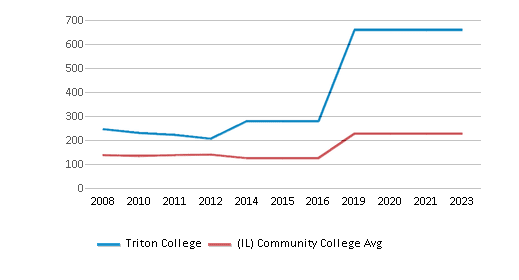
School Calendar
Student Body
The student population of Triton College has grown by 57% over five years.
The student:teacher ratio of 23:1 has increased from 13:1 over five years.
The Triton College diversity score of 0.69 is equal to the state average of 0.69. The school's diversity has stayed relatively flat over five years.
Total Enrollment
15,090 students
3,270 students
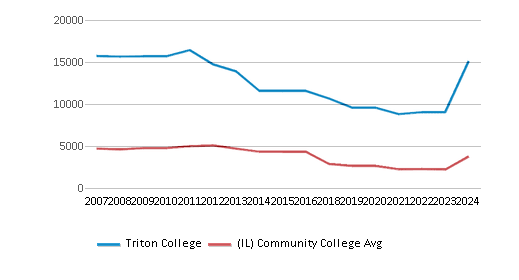
Student : Teacher Ratio
23:1
21:1
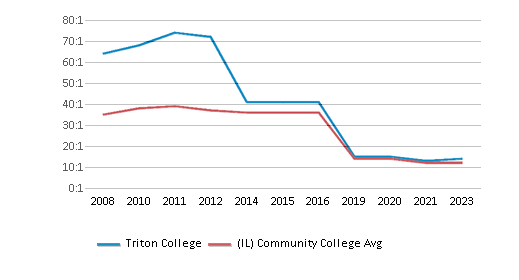
# Full-Time Students
3,126 students
1,007 students
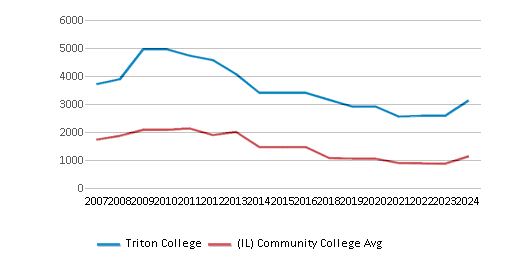
# Part-Time Students
11,964 students
2,747 students

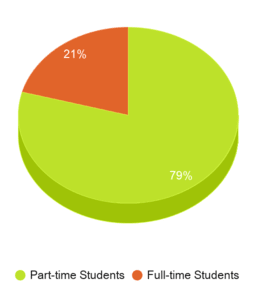
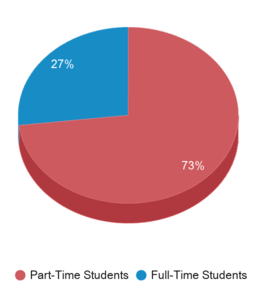
# Enrollment Undergraduate
150 students
328 students
# Full-Time Undergraduate Students
3,126 students
1,007 students
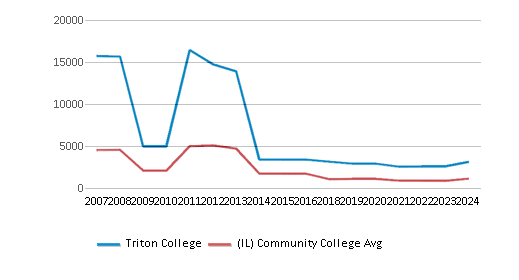
# Full-Time Graduate Students
n/a
43 students
# Part-Time Undergraduate Students
11,964 students
3,310 students
# Part-Time Graduate Students
n/a
18 students
Total Dormitory Capacity
n/a
132 students
% American Indian/Alaskan
n/a
n/a
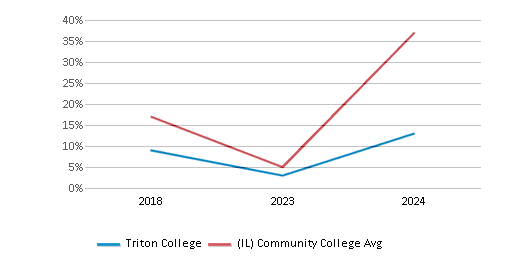
% Asian
3%
6%
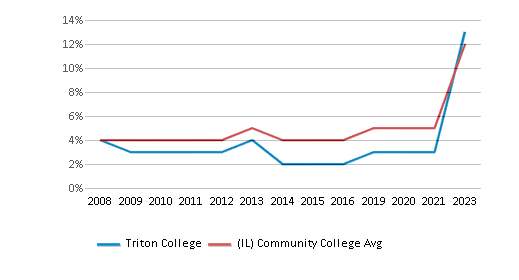
% Hispanic
45%
26%
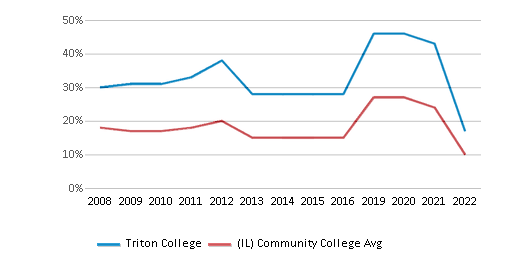
% Black
12%
13%
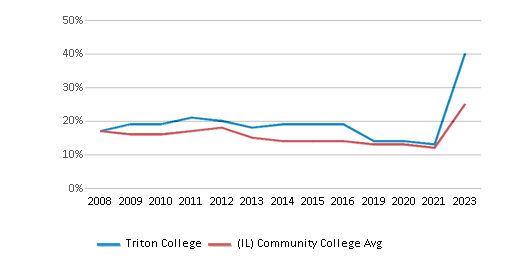
% White
31%
47%
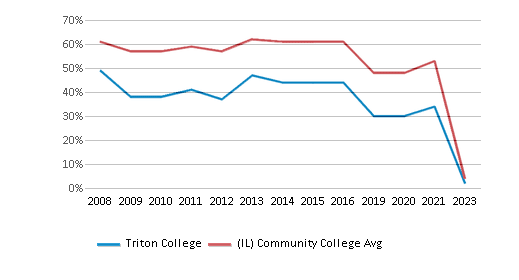
% Hawaiian
n/a
n/a

% Two or more races
2%
3%
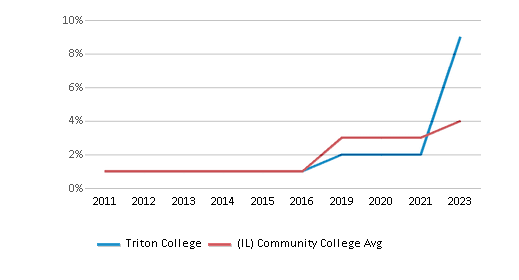
% Non Resident races
1%
1%
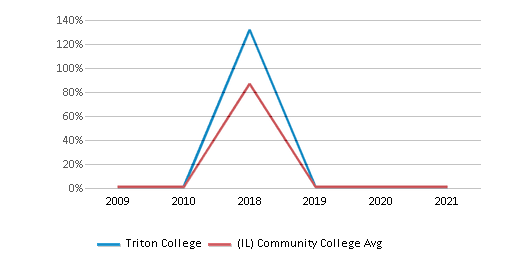
% Unknown races
7%
4%

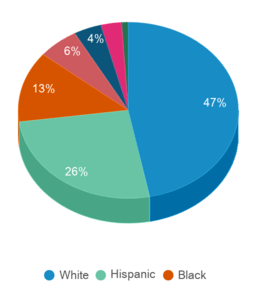
Diversity Score
0.69
0.69

College Completion Rate (Students who graduate in less than 4 years)
0.3458%
0.4%
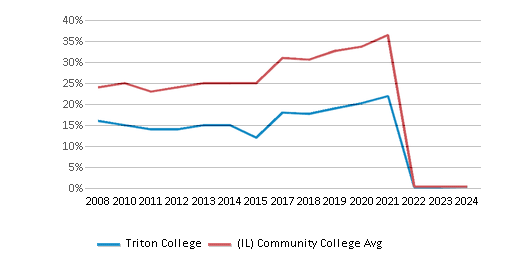
College Completion Rate (Students who graduate in 4 years or more than 4 years)
n/a
0.38%
Average Graduate Earnings (10 Years)
$36,200
$31,800
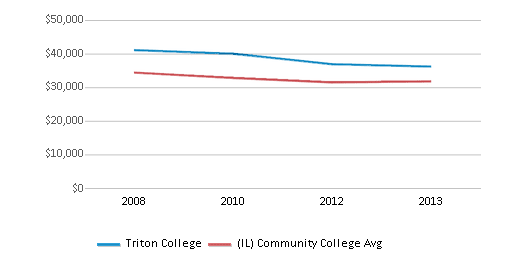
Tuition and Acceptance Rate
The public in-state tuition of $8,858 is more than the state average of $7,875. The in-state tuition has declined by 18% over four years.
The public out-state tuition of $11,018 is more than the state average of $10,847. The out-state tuition has declined by 18% over four years.
In-State Tuition Fees
$8,858
$7,875
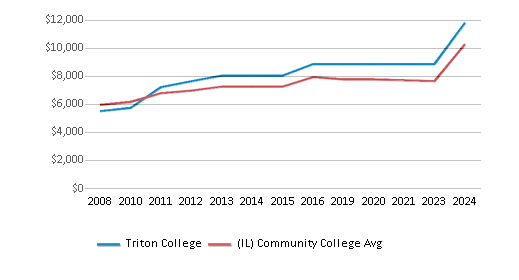
Out-State Tuition Fees
$11,018
$10,847
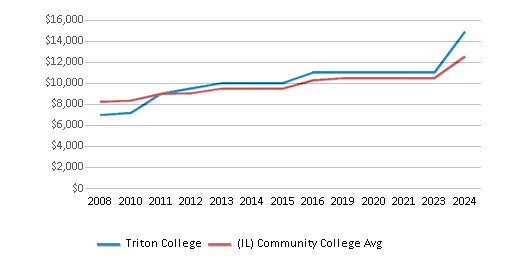
% Students Receiving Some Financial Aid
71%
82%
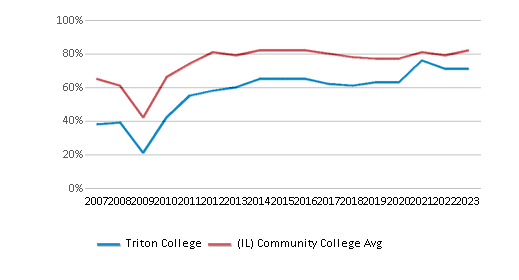
Median Debt for Graduates
$9,455
$8,187
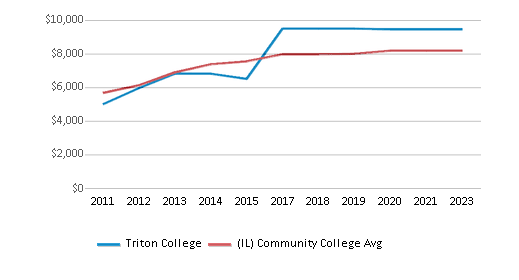
Median Debt for Dropouts
$4,750
$4,618
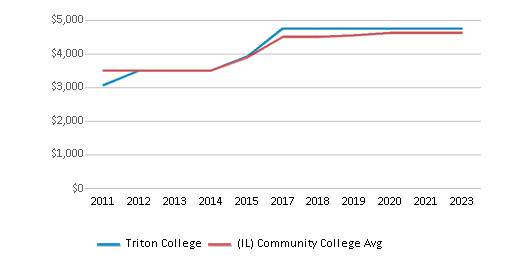
Acceptance Rate
n/a
89%
SAT Reading
n/a
390
SAT Math
n/a
360
SAT Writing
n/a
355
ACT Composite
n/a
17
ACT English
n/a
17
ACT Math
n/a
17
Source: 2024 (or latest year available) Integrated Postsecondary Education Data System (IPEDS) , School Administrators
School Notes
- Triton College is one of the nation's premier two-year institutions of higher education. Located just 14 miles from downtown Chicago, the school offers outstanding educational value in a dynamic environment, rich in academic and cultural resources as well as career-oriented learning opportunities. Triton's attractive 100-acre campus features state-of-the art facilities, thriving arts and athletics programs, and a comfortable, friendly atmosphere. Our community is culturally diverse, with students, faculty, and staff cooperating to promote the values of integrity, open dialog, teamwork, and mutual respect, while striving for excellence in all that we do. The campus also features state-of-the art facilities, including electronic classrooms, labs, sports facilities, a well-stocked library and bookstore, an art gallery and performing arts center, and the renowned Cernan Earth and Space Center. In addition, many of Chicago's world-class cultural attractions are just minutes away. Our programs are some of the most innovative in the nation, emphasizing community involvement and personal attention while maintaining high academic standards. Over 17,000 students enroll at Triton each semester, yet our average class size is only 20.4 students. Our faculty is highly qualified, combining distinguished academic credentials with valuable real-world experience. At just $56 per credit hour, plus the money you save by commuting from home, Triton is a truly exceptional value. Triton College is committed to developing leaders and generating ideas that change the world. Students, faculty, and staff cooperate to create a positive learning environment where integrity, open dialog, teamwork, and mutual respect are the rule. We strive to promote critical thinking skills, and to instill a standard of excellence that translates directly into our students' practice and performance. Our personal focus and affordable tuition makes us an outstanding educational value, exceeding most students' expectations.
Frequently Asked Questions
How much does Triton College cost?
Triton College's tuition is approximately $8,858 for In-State students and $11,018 for Out-State students.
What is Triton College's ranking?
Triton College ranks among the top 20% of community college in Illinois for: Diversity in US community colleges and Largest student body.
Recent Articles

Obtaining Your Bachelor's Degree at a Community College
Explore the evolving landscape of community colleges offering bachelor's degrees, addressing affordability, accessibility, and workforce needs.

A to Z of Community College Certificates and Courses
From business and healthcare to technology and skilled trades, the article showcases the breadth of options available to students seeking to enhance their knowledge, develop new skills, or pursue career advancement.

What is a Community College?
This comprehensive guide explains what a community college is, its history, and its role in higher education. It covers the types of programs offered, differences from four-year colleges, benefits of attending, and important considerations for prospective students, providing valuable insights for those exploring educational options.









